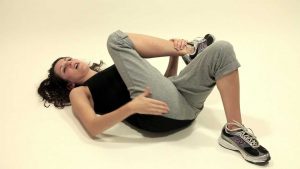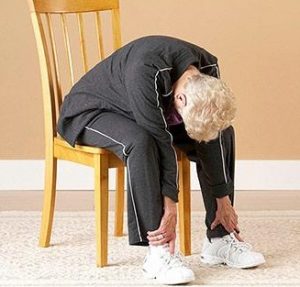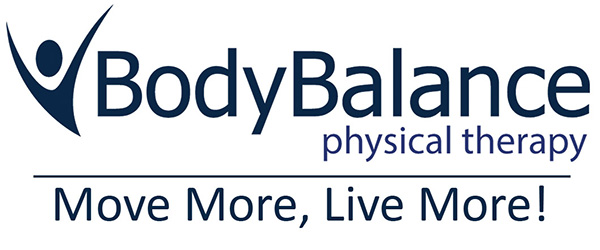3 Simple Exercises for Low Back Pain
What exercises should I do for my Low Back Pain?
By David Hutchinson, PT, MPT, OCS
If you experience low back pain, you are not alone. Low back pain is a very common diagnosis that I have been treating for more than 20 years. Nearly everyone will experience low back pain at some point in their lives. Even I have not been immune to low back pain.
The simplest tasks, like bending down to load the dishwasher or walking through the grocery store, can become difficult or even impossible. I hate missing work or not being able to finish projects because of low back pain.
Here are three great, simple exercises to help alleviate or eliminate your low back pain.
3 SIMPLE EXERCISES FOR LOW BACK PAIN
KNEE TO CHEST STRETCH for Low Back Pain

- Lie on your back with both legs bent.
- Gently pull one knee towards your chest.
- Hold 2 to 3 seconds. Do this 10 to 15 times, alternating legs.
- Repeat 2 to 3 times a day, or anytime you feel pain.
PIRIFORMIS STRETCH for Low Back Pain

- Lie on your back with both legs bent.
- Bring your right foot across the opposite knee.
- Gently pull your right foot and knee towards you.
- Hold 2 to 3 seconds. Do this 10 to 15 times, alternating legs.
- Repeat 2 to 3 times a day, or anytime you feel pain.
LOW BACK SEATED STRETCH for Low Back Pain

- Sit in a chair with legs slightly apart.
- Bend over and grab your ankles, or your toes if you can.
- Pull up on your back.
- Hold 3 seconds. Repeat 5 to 10 times.
- Do another set if necessary.
BENEFITS AND RISKS OF EXERCISES FOR LOW BACK PAIN
By doing these low back exercises, you may experience improvement in your symptoms and functional activities as well as resolution of other key complaints or problems. This is a good benefit in doing low back pain exercises and stretches.
However, you may experience an increase in your current level of pain, if pain is part of your complaints. Many times increased activity or therapy interventions will bring on some discomfort, this is usually temporary.
As a general rule, if your pain or discomfort does not subside within twenty-four (24) hours, you should discontinue any exercise involving that particular activity, if applicable, and contact your physical therapist. Please note that we cannot make any promises or guarantees regarding a full resolution of and/or correction of your condition.
If these low back exercises are making your low back pain worse, you should not try to work through the pain. The pain may be telling you that
- You are performing the particular exercise wrong
- The exercise you are performing is not designed for your particular low back condition
- You may have another injury or low back condition of which you are not aware (see some common causes of low back pain below)
So if you don’t find relief of your pain by exercising, stop. Next, schedule an appointment with your physical therapist for a consultation to review your symptoms and exercise program.
As a physical therapist at Body Balance Physical Therapy, I and my colleagues can prescribe a treatment plan that is specifically designed for your particular condition. Let us help you get your life back so you can “Move More, Live More!”
Call today for an immediate appointment.
TWIN FALLS 208-736-9011 GOODING 208-934-9011
SOME COMMON CAUSES OF LOW BACK PAIN
Low back pain can be due to a simple or a very complex issue. Causes can include:
- Spinal Stenosis
- Spondylolisthesis
- Lumbar Herniated disc
- Bulging or ruptured discs
- Degenerative disc disease
- Facet joint dysfunction
- Sacroiliac joint dysfunction
- Muscle or ligament strain
- Osteoarthritis/Arthritis
- Skeletal Irregularities/Deformities
- Osteoporosis
- Compression fracture
- Trauma
Other potential contributors to lower extremity pain (radicular like) include:
- Herniated nucleus pulposus
- Scoliosis
- Ankylosing Spondylitis
- Tumor/Metastasis
- Discitis
- Osteomyelitis
- Nerve root sleeve cyst (Tarlov)
- Vasculitis
- Arteriovenous malformation
COMMON SYMPTOMS OF LOW BACK PAIN
Specifically identifying and describing your symptoms can help target the cause of your pain. Common findings of Low Back Symptoms that I see in the clinic are
- Pain that starts as incidental and increases with activity:
- Pain that feels better when changing positions
- Dull, achy pain
- Sharp pain with movement
- Hip flexor tightness
- Hamstring tightness
- Leg pain
- Pain that is worse after prolonged sitting
- Paraspinal muscle spasms
- Pain with extension
- Lumbosacral tenderness
- Phalen– Dickson sign (knee-flexed, hip-flexed gait)
- Flattened lumbar lordosis is common.
- Heart-shaped buttocks (The sacrum may appear vertical. Pelvic flexion and subtle gluteal wasting may make the iliac crests more prominent)
- Pelvic waddle
- Positive prone instability
- Positive active straight leg raise
- Step-off deformity (high grade listhesis)
- Pain that is worse after waking up and better after moving around
- Pain that travels from your low back to the buttocks, legs, and feet
Identifying the symptoms and getting a diagnosis that targets the underlying cause of your pain is critical in achieving effective pain relief.
CONCLUSION – 3 SIMPLE EXERCISES FOR LOW BACK PAIN
I hope that the above exercises and advice will help you find long-term relief from your low back pain.
For questions regarding these exercises or your back condition, please contact:
David Hutchinson, PT, MPT, OCS
Body Balance Physical Therapy, 1053 Eastland Dr., Twin Falls, ID 83301
Email: click here
This blog is designed to provide general information on pertinent physical therapy topics. The statements made are provided for educational purposes only. They do not constitute medical advice nor do they necessarily reflect the views of Body Balance Physical Therapy or any of its therapists other than the author. This blog is not intended to create a therapist-client relationship between you and Body Balance Physical Therapy. If you have specific questions as to the application of these exercises to your medical condition, you should seek the advice of your physical therapist.
